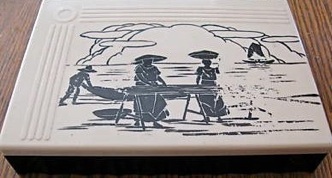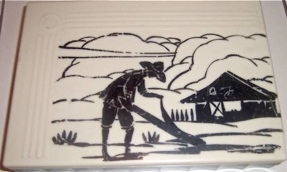Plastic Cigar Boxes
A National Cigar History Museum EXCLUSIVE
© Tony Hyman
Latest addition: August 11, 2010

Plastic Cigar Boxes
A National Cigar History Museum EXCLUSIVE
© Tony Hyman
Latest addition: August 11, 2010
Until after World War Two, there doesn’t seem to have been much interest in plastic for making cigar boxes. Plastic had the advantage of being lightweight, but the cost savings in shipping was outweighed by the losses due to damage. Plastic boxes break when dropped, melt in the sun, and have fragile hinges.
This display is not intended to be exhaustive. Its goal is to introduce you to a few interesting, occasionally successful, attempts to use plastic for cigar boxes.
Plastic 10/10 wrapped in cellophane and packed in a larger cardboard box containing 20? of these packs of cigarillo-size cigars made in Tampa, c1970.
[3559]
Post 1960 pocket ANTHONY & CLEOPATRA
pack of 6 Grenadiers, which would not have been permitted a few years earlier.
[3618]
Plastic does offer a greater range of possibilities than some other materials. A terrific novelty “box” is this duck which originally came with a bundle of 25 WHITE OWL Rangers stuffed in
his back. 1970’s? The duck, but not the box, is in the NCM.

Modern cigar companies are still trying to make plastic work. The full-panel adhesive labels don’t appear to stick well, but the 50/13 box is attractive.
[3515]
About as fragile, and plain, as a cigar box can be
is this mid 1950’s WILLIAM TELL “plastic 50/up” complete with humidifying sponge in the lid.
[2883]
Miscellaneous plastic boxes
Plastic damages easily, so using a formed box made out of unbreakable styrofoam to hold 25 tubes upright seemed like a good idea. Didn’t catch on, perhaps because styrofoam was associated with ‘cheap.’
[2863]
EL PRODUCTO
EL PRODUCTO has been recognized as a packaging innovator since the 1950’s. This striking plastic box for its best selling Queens size is a good example.
[2851]
EL PRODUCTO Blunts were not packed in tubes so solid sided boxes worked great. Both boxes are slip tops.
[2852]
At 11” x 9+” the 25/25 EL PRODUCTO Flagship assortment is probably the largest cigar box to be made of plastic.
[8853]
Same physical size, but EL PRODUCTO expanded the Flagship assortment to a 26/26 after the law restricting cigars to boxes of 5, 10, 25, 50 or 100 was lifted in 1959. Five frontmarks (sizes) became nine.
[8854]
The flag alphabet is spelled out around the edge of the newer Flagship box.
[8855]
Consolidated Cigar Corp was an innovative packager of its DUTCH MASTERS cigars also. This plastic 10/5 was distinctive but suffered the same problems of other plastic boxes. Its hinges were especially prone to break.
[3517]
Jose Escalante, a major user of plastic
[3507]
Distinctive “plastic 50/13” used by one of America’s long running giants, Louisiana’s Jose Escalante, for their national CORINA brand. These are usually found with the top oval soaked off. 1960’s.
CORINA gave up the señora who decorated boxes since 1935 in favor of a Western painting “Apaches Listening” by Frederick Remington on plastic 50/13 Cigarillo boxes. 1970’s?
[9749]
AURELIA, another Jose Escalante offering, is one of a half dozen or more mid 1950’s brands packed in clear plastic 10/5 packs. This one shows the ravages of shop use, a fate that awaited most of these handy but not sturdy boxes.
CORINA, WEBSTER, ROBT. BURNS, R.G. DUN are some of the other users of similar plastic 10/5’s.
[3514]
A modernized 60’s AURELIA woman replaces the deco cutie used in the 1950’s.
[3509]
Common modern plastic boxes
Plastic boxes today’s flea market shopper is most likely to find include various shapes used since 1960 to pack HOUSE OF WINDSOR and MARK IV.
[3506]
Instead of color marks, these folks used black, brown and (the rarest) white boxes, cleverly changing the color according to the color of the cigars inside. White are very rare and not in the NCM collection.
[3516]
[3518]
A.J. Jerry Golden’s BLUE RIBBON was packed in this 60’s 50/13 which shows the two biggest disadvantages of plastic, a break (top left) and a warp (front right).
Back in the 1970’s I found my first two of these at Reninger’s in PA. During the 3 hour drive to then home Watkins Glen they both melted in the back window of the car. Mea culpa, mea culpa, but who would have thought it?
[4326]
Canadian BENSON & HEDGES Cabinet 25/5
In colorful contrast to the stark deco designed Philippine boxes above, this “plastic 25/5 lift top” from 1950’s Canada has imbedded sparkles.
[3504]
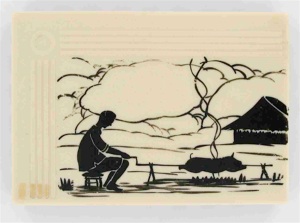

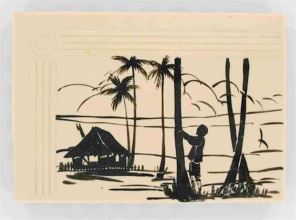





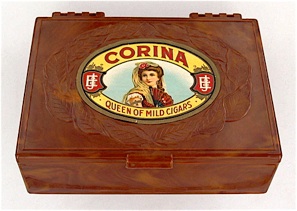
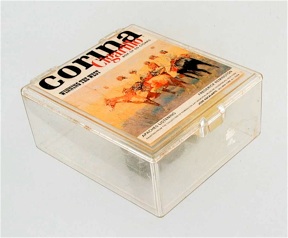

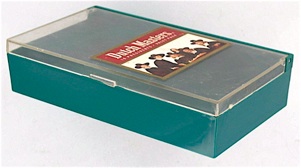

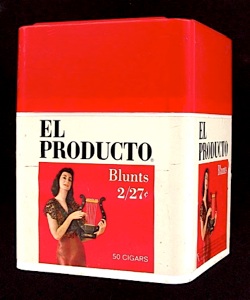
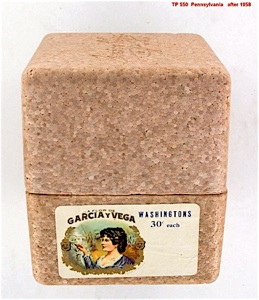

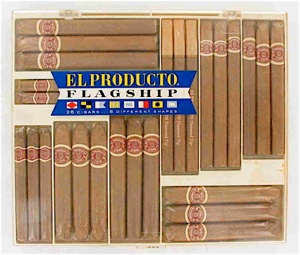



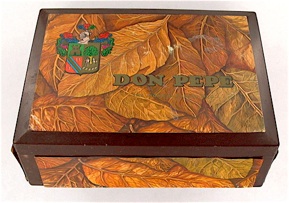
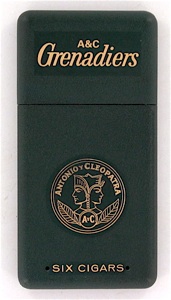
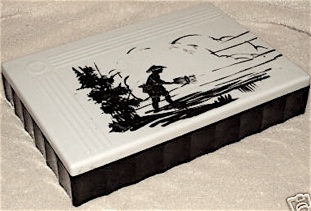


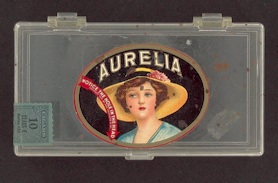
Consolidated cigar Co., a packaging innovator, used a plastic lid and plastic inserts in its post-1960 Showcase assortment. Interesting that a traditional 17 cigars were in the top row (an historic count) but only two rows deep for a total of 34 cigars rather than traditional 50.


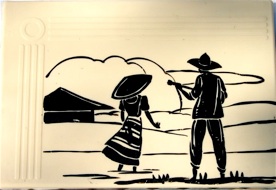
Desirable plastic boxes include those used by the Philippine LA INSULAR. These white and ivory colored boxes are made of a plastic similar to Bakelite© and decorated with silkscreened silhouettes, not decals. Unfortunately, these attractive 25/13 boses are quite brittle and the paint easily scraped off.
I don’t know when these were issued (1930’s?) or how many designs exist. I own the top two and center left and found the center right and the two on the bottom on the net. If you know anything about the history of these distinctive packages, information would be appreciated.
[3502] [8839]
[8841] [w0000] Center right and two bottom are not in NCM collection
